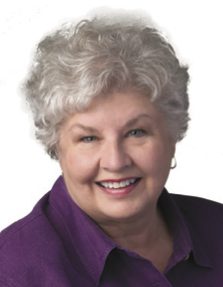
16 Sep 2017 ‘As if war was not enough . . .’
by Vivian Lawson Hogue
It may surprise some that Arkansas lost 7,000 of its population in the 1918 influenza outbreak, otherwise known as the “Spanish Flu.” It may surprise even more that the state had a connection to France in the spread of the disease.
Initially, it is believed by scientists that this flu began in Haskell County, Kan., a rural area of farm families raising pigs and poultry. Men, who had been to large training camps preparing for battle in World War I, visited their homes in Haskell before leaving for Europe. Several reported to Camp Funston in Eastern Kansas.
In March 1918, a soldier became ill there. Hours later, there were more than 100. In a month, there were 1,000. About 50 had died.
An earlier, lighter strain of flu had spread as soldiers traveled overseas in crowded and unhygienic conditions. That strain spread across America and into France where American troops disembarked. However, the deadliest strain in July 1918 arrived with troops from Arkansas’s Camp Pike (now Camp Robinson).
Rural areas likely had deaths not reported or documented. Causes were lack of medical care, no means of communication and illiteracy in recording deaths. Often, there were no cemetery records as families buried their own on their property. Those who normally helped neighbors were either not able or were fearful of contagion.
The war was over on Nov. 11, 1918, but the influenza continued into 1919, during which a third wave was the last. In the end, at least 675,000 Americans were dead with a worldwide count of 50 to 100 million. Comparatively, the military and civilian death total of the war itself was about 38 million.
The State of Arkansas preferred not to publish the details of the disease for its people until after the war was over. During the previous month, when Conway began to have a number of cases, its newspapers began coverage, although still calmly. The case numbers rose, as did the death toll. Hendrix College suffered the most cases locally. In the second wave, sessions were dismissed and the campus was quarantined. The other two colleges had no cases. The side effects of the epidemic were many. People could not get out to vote and businesses lost sales.
Also in October, the American Red Cross began a production of flu masks made of gauze to help prevent airborne bacteria. They engaged the help of Central College (now Central Baptist College) and Conway’s State Normal (now University of Central Arkansas) in making and delivering the masks to drug stores. Non-medically approved antidotes were calomel tablets, castor oil, Epsom salts, quinine and laxatives.
In his book relating his upbringing in the hills of Arkansas, my dad said, “There were many diseases for which a doctor was consulted as soon as the disease was suspected, often too late. Pneumonia was a dreaded disease for all ages.”
One of his nine siblings had it in 1912 and he acquired it in 1913. He said, “In each case, I noted the doctor motioning Dad to follow as he went out the door. I learned later it was to inform Dad that he did not expect us to survive. Mother always maintained that turpentine packs she put on our chests pulled us through.”
He continued, “In the spring of 1918, I contracted the ‘flu’ that raged that year. I do not know if I had pneumonia with it or not, but I was unconscious for several days. The doctor contracted the flu the day he came to see me.”
Pneumonia usually accompanied the flu, and was the leading cause of death during the pandemic. In fact, in 2008 it was discovered that a group of genes aided in weakening the respiratory system to allow the entrance of the killing pneumonia.
There were possibly fewer flu deaths in the hills than in more populated areas, but in small or remote towns in Arkansas and elsewhere, the deceased were often prepared for burial by friends and neighbors. “In those early 20th century times,” my dad wrote, “everyone was as diligent in the care of the dead as they were in taking care of the ill. There were no mortuaries near, so the neighbors laid out and dressed the corpse. One or more of them remained with the body overnight after it had been placed in the coffin. Burial could not be postponed for long due to lack of embalming facilities. On burial day, neighbors would gather at the graveyard and dig the grave. The casket was loaded onto a wagon and driven to the place of interment, the grave decorated with flowers from home or gathered from the roadside on the way.”
A cousin states that her great-aunt and uncle both died in October 1918 during the epidemic. They had three children, ages 8, 6 and 5, who were raised by their grandparents. This became a common circumstance.
Ben McNew, a retired economics and finance instructor at the University of Central Arkansas and former Greenbrier resident, tells of an unusual event in the Arthur and Myrtle (Lawrence) Merritt family of that town. The Merritts had two sons, Chester and Dennis, and an 8-year-old daughter, Velma Kate. Arthur and Myrtle died during the epidemic and Velma Kate also contracted the disease.
According to family members, the three were being “dressed out” for burial when someone became aware Velma Kate was still breathing. The child recovered and died in 2002 as a prominent person in Vilonia and North Little Rock. Preceded in death by her husband, Dr. Cecil W. Lewis, she was a retired teacher of more than 40 years.
In reality, it is a sobering thought that with the condition of some patients, such as my father’s coma and Velma Kate’s unresponsiveness, there may have been others who were thought to be deceased, but were not.
A study of Judeo-Christian history indicates diseases and infirmities in very early records. The Book of Revelation of the Christian Bible speaks of the End Times and the Four Horsemen, the first of which will bring plagues. While man is powerless to prevent outbreaks, he can somewhat minimize the spread. The slogan during 1918 was, “Cover each cough and sneeze; if you don’t, you’ll spread disease.” Add frequent handwashing to that and you have a good start.
Editor’s note: Information for this article was obtained through the Encyclopedia of Arkansas; the Butler Center for Arkansas Studies, Little Rock; Marvin Lawson’s book, “By Gum, I Made It;” Randi Knight’s academic paper on “The Influenza Pandemic of 1918 in Conway, Arkansas”; personal anecdotes; and a personal interview with Dr. Ben McNew.
A native of Conway, Vivian Lawson Hogue graduated from the University of Central Arkansas with a degree in art education. A retired teacher, she worked in the Conway School District for 23 years. She is editor of the Faulkner County Historical Society’s semi-annual publication, “Faulkner Facts and Fiddlings.” She can be reached at vhogue@conwaycorp.net.












